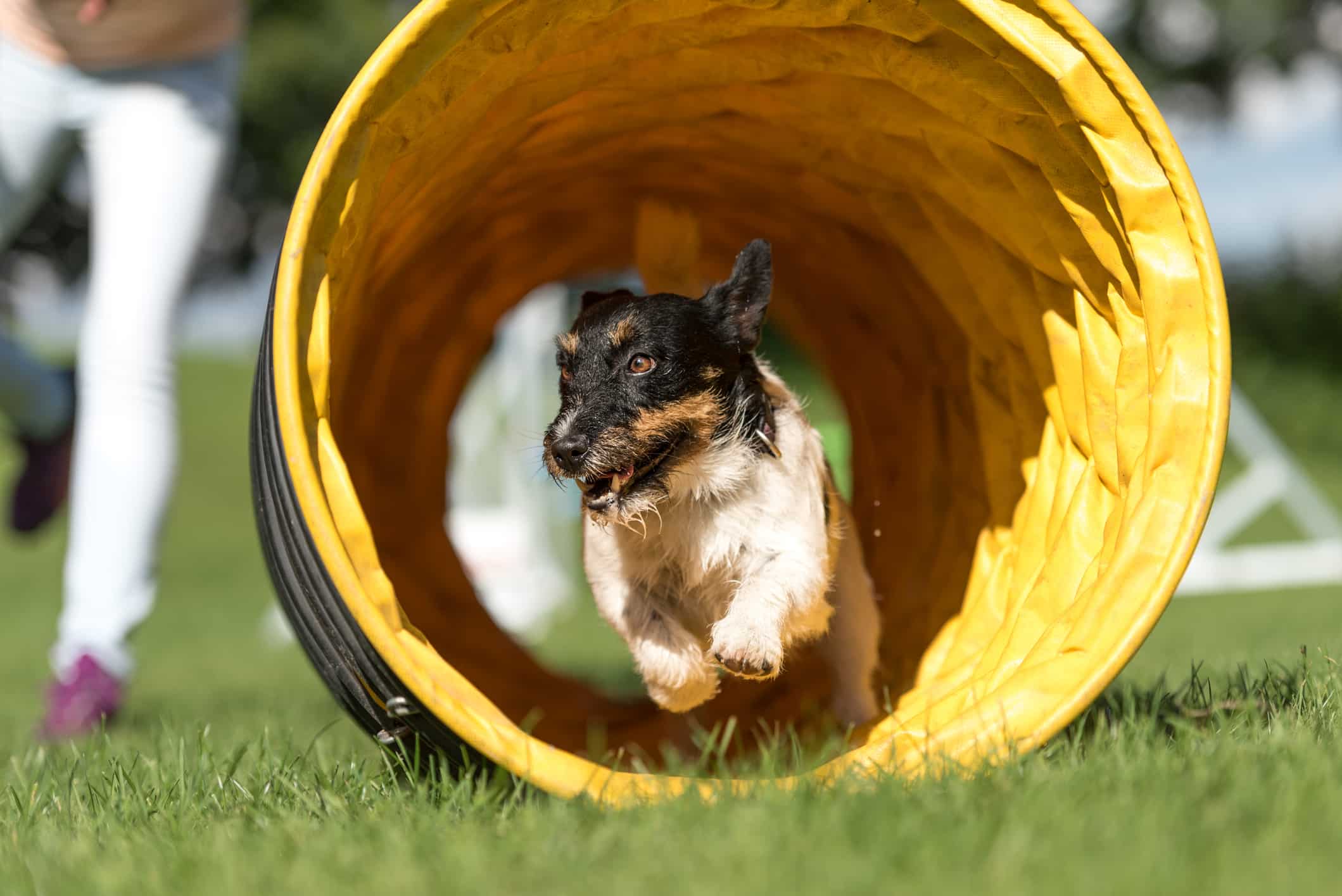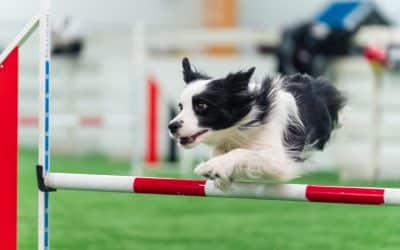Agility training is easier than you think! In fact, you can get started by making a dog agility course right in your backyard! It doesn’t matter what your dog’s breed or size is — agility is all about learning to communicate with your dog and bond in a unique way. Dog agility courses are really the ultimate mind-body exercise for your dog, and training together enriches their lives as much as it strengthens your relationship.
Puppies and adult dogs of any breed can benefit from agility training, especially when you factor in advice from an experienced coach. If you ever feel like getting the hang of your dog’s training is too tough, consider reaching out to us for some pointers.
Now, let’s dive into 5 tips that will make dog agility training at home fun and exciting for you and your four-legged friend.
Remember to keep it fun
Training is supposed to be an enjoyable experience for you and your dog! It’s easy to get too focused on results rather than the process. Remember that the best way to keep your pup engaged is to work at their own pace, reward with something they love, communicate in a way they understand and take breaks when you need to.
Agility is one of the best ways to train together because it’s a physical and mental workout for you and your dog. It combines the power of play with concentration and commands. Things may not always go according to plan, though. Expect a lot of learning and funny moments worth laughing about now and later.
Make sure the environment and agility course is safe for your dog
Building a dog agility course can be DIY-ed easily, obstacles don’t need to be perfect, just safe! Dogs need to be trained at a level that’s respective of their physical stature and mental age. Taking dogs into an activity too advanced for them can lead to anxiety and fear, injury plus stress on your end, which they pick up on.
Make sure that your obstacles are not too high (puppies shouldn’t be jumping until their growth plates close and adult dogs should jump the height of their shoulders), safely distanced to avoid collisions, and not too sharp or slippery. If you’re training during a summer day, ensure that the equipment isn’t too hot for your dog’s paws and that you don’t over-exert yourself or your dog. If your dog is a bit overweight or unfit, start with small sessions and no jumping and gradually build up the level as your dog gets fitter.
You’ll also need to have warm-ups and cooldowns, just like when you exercise yourself. A good 10-minutes of light jogging and play can get your pup ready to train, and cooldowns can include a 5 to 10-minute walk and active stretches that lengthen the limbs and help prevent muscle knots.
Focus on Foundational Skills — And Keep Practicing Them
Basic agility training includes focusing on obstacles, learning to turn and collect, following your handling and much more. These foundational skills influence your dog’s performance at every level of agility. Even after they’ve gotten the basics down, it’s always good to revisit them and practice. Strong foundations makes agility easier!
In fact, the more you practice foundational skills, the easier it is to introduce new equipment and navigate more complex courses later on.
Working on foundational skills is also a wonderful opportunity for you to build greater trust and connection with your dog. When they know they can rely on you 100% for guidance and fair training, they’ll have less resistance in every day life too!
Get help from experts
Agility training isn’t something you master overnight. It is an ongoing process with your dog, and sometimes, you need extra support to reach your goals. Working with an experienced canine agility coach can make a world of difference in both your dog’s performance and your confidence.
Using dog agility course maps designed by an expert is a great start. If you need some more help, consider reaching out to a coach who can help you and your dog overcome any obstacles you’re facing. Most importantly, understand that agility training is a journey where you and your dog will continue to learn and improve.
Trust Your Dog
Your dog knows themselves best, and you should look to them for guidance on the course, too. When sequences are easy, you’ll naturally go along with your dog’s rhythm and feel like you’re moving in tandem. Recognize that mistakes are not the dog’s fault. Your dog only knows what you have taught them and they react naturally to your body language. Perhaps you turned too quickly, took your eyes off your dog or moved forward too quickly before your dog understood the exercise.
Embrace the learning process, and look to your dog’s behavior as a sign of where you need to improve as well. Even though you’re leading the way, you may still need to revisit the way you’re communicating with your dog to ensure your dog can easily understand what they need to do. If you’re not sure where you’re going wrong — we recommend recording your sessions and rewatching them so you can identify specific areas for improvement or sending them to our coaches for feedback.
Our free eBook contains 7 agility course maps that suit a small space. The courses range from fairly simple to advanced and contain a variety of different obstacles.
Always give your dog information early, like OneMind coach Niki Drage does in this video. And if you’re struggling to find mistakes in your own footage, send your video to us! We’re happy to review it and give you some tips.
Download our free dog agility course eBook today!
The OneMind Dogs agility course eBook has 7 backyard agility course maps you can put into practice right at home. It’s also written by our experienced coaches, so you get professional guidance from knowledgeable agility trainers right at your fingertips. Fill int he form below to get your free copy!



